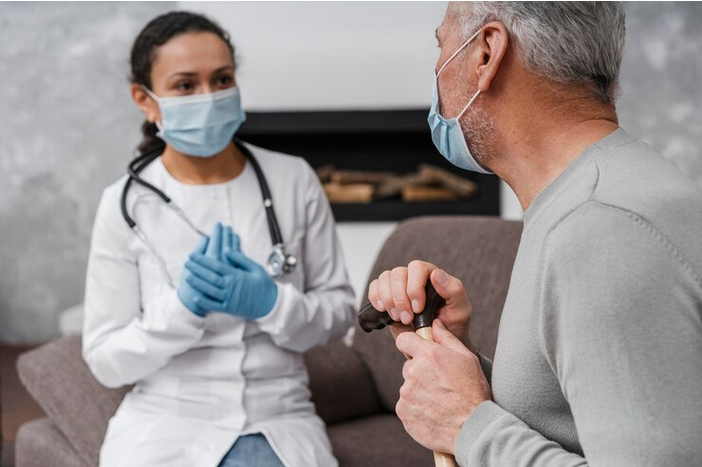Chlamydia is a common sexually transmitted infection (STI) caused by the bacterium Chlamydia trachomatis. It often goes unnoticed due to its asymptomatic nature, which can lead to serious health complications if left untreated. Understanding chlamydia infection treatment includes recognizing its symptoms, knowing how it is transmitted, and most importantly, being aware of the various treatment options available. This article will explore the intricacies of chlamydia, shedding light on what individuals can expect when diagnosed, and the avenues available for effective treatment.
Table of Contents
ToggleThe Silent Epidemic: Recognizing Symptoms
One of the most challenging aspects of chlamydia is its reputation as a “silent” infection. Many people infected with chlamydia do not exhibit noticeable symptoms, which can lead to a false sense of security. When symptoms do manifest, they may include abnormal discharge from the vagina or penis, burning sensation during urination, and pain during sexual intercourse. In women, chlamydia can also cause abdominal pain, bleeding between periods, and fever. Men, on the other hand, may experience swelling or pain in the testicles.
It’s important to note that these symptoms can be mild and easily mistaken for other conditions. As a result, regular screening is crucial, particularly for sexually active individuals under 25 or those with new or multiple partners. The Centers for Disease Control and Prevention (CDC) recommends annual screenings for chlamydia for sexually active women under 25 and for those at increased risk. By understanding the symptoms and the importance of testing, individuals can take proactive steps to safeguard their health.
Transmission and Risk Factors
Chlamydia is primarily transmitted through sexual contact, which includes vaginal, anal, and oral sex. The infection can be spread even when an infected individual does not show symptoms. This creates a significant challenge in controlling its spread, as many may be unaware of their status. Factors that increase the risk of contracting chlamydia include having multiple sexual partners, a previous history of STIs, and inconsistent use of condoms during sexual activity.
Additionally, young adults and adolescents are at a higher risk due to a combination of behavioral factors, including experimentation and lack of access to healthcare. Furthermore, certain populations, such as men who have sex with men (MSM), also face elevated risks due to specific sexual practices. Being aware of these risk factors can empower individuals to make informed choices about their sexual health and engage in preventative measures.
Diagnosis: What to Expect
If you suspect you have chlamydia or have been exposed to the infection, seeking medical attention is crucial. The diagnosis process typically involves a simple urine test or a swab from the affected area, such as the cervix, urethra, or throat. These tests are quick, non-invasive, and highly effective in detecting the presence of Chlamydia trachomatis.
Once diagnosed, it is essential to communicate openly with healthcare providers about any symptoms experienced and any sexual partners who may also need testing. Confidentiality is a key element of sexual health services, and healthcare professionals are trained to handle these conversations with sensitivity. Understanding the diagnosis process can help alleviate anxiety and encourage individuals to take action for their health.
Treatment Options: Effective Solutions
The good news for individuals diagnosed with chlamydia is that the infection is highly treatable. The standard treatment involves antibiotics, which can effectively eliminate the bacteria from the body. Azithromycin, taken as a single dose, or doxycycline, taken over seven days, are among the most commonly prescribed antibiotics for chlamydia. It is crucial to follow the prescribed treatment regimen completely, even if symptoms resolve quickly.
In addition to medication, it is essential for patients to refrain from sexual activity for at least seven days after treatment, or until all partners have been tested and treated. This helps prevent reinfection and further spread of the disease. Furthermore, partners should also be treated to eliminate the risk of transmission, highlighting the importance of open communication in sexual relationships.
What to Expect After Treatment
After completing treatment for chlamydia, individuals may wonder what to expect in terms of recovery and follow-up. Most people experience a complete resolution of symptoms within a few days. However, it is important to attend a follow-up appointment with a healthcare provider to ensure that the infection has been fully cleared. The CDC recommends retesting for chlamydia approximately three months after treatment, as reinfection is common.
Additionally, individuals should be aware of potential complications that can arise if chlamydia is left untreated. In women, untreated chlamydia can lead to pelvic inflammatory disease (PID), which can cause chronic pain and infertility. Men may experience epididymitis, a painful condition affecting the testicles. These potential complications underscore the importance of timely diagnosis and treatment.
Prevention: Taking Charge of Your Sexual Health
Preventing chlamydia and other STIs requires a proactive approach to sexual health. Consistent use of condoms during sexual activity significantly reduces the risk of transmission. Additionally, engaging in regular screenings and open communication with partners about sexual health can help create a safer sexual environment.
Education and awareness are also essential components of prevention. Understanding the risks associated with different sexual practices, knowing the symptoms of STIs, and recognizing the importance of testing can empower individuals to take charge of their sexual health. Public health campaigns aimed at raising awareness about chlamydia and its implications play a crucial role in reducing the incidence of this infection.
Conclusion: A Path Forward
Chlamydia, often referred to as a silent infection, poses significant health risks if left untreated. However, with proper understanding, early diagnosis, and effective treatment, individuals can overcome this infection and protect their long-term health. By fostering open communication, practicing safe sex, and prioritizing regular testing, individuals can take proactive steps toward a healthier future.
The journey to understanding chlamydia is not just about the infection itself but also about empowering individuals to make informed decisions regarding their sexual health. By equipping ourselves with knowledge, we can break the stigma surrounding STIs, promote healthier relationships, and ultimately reduce the prevalence of infections like chlamydia in our communities.




